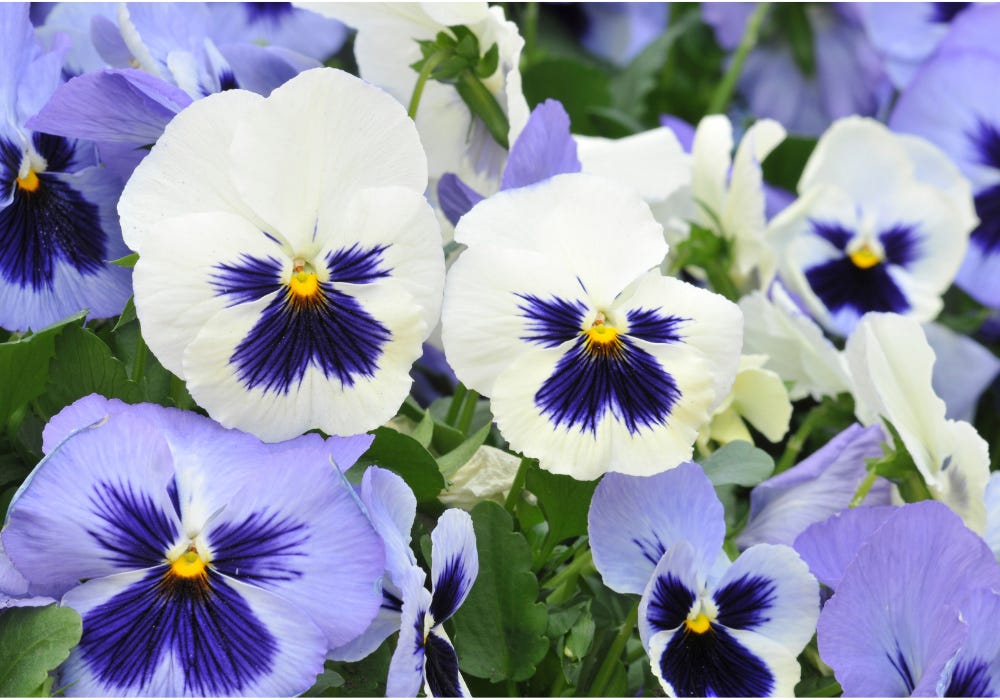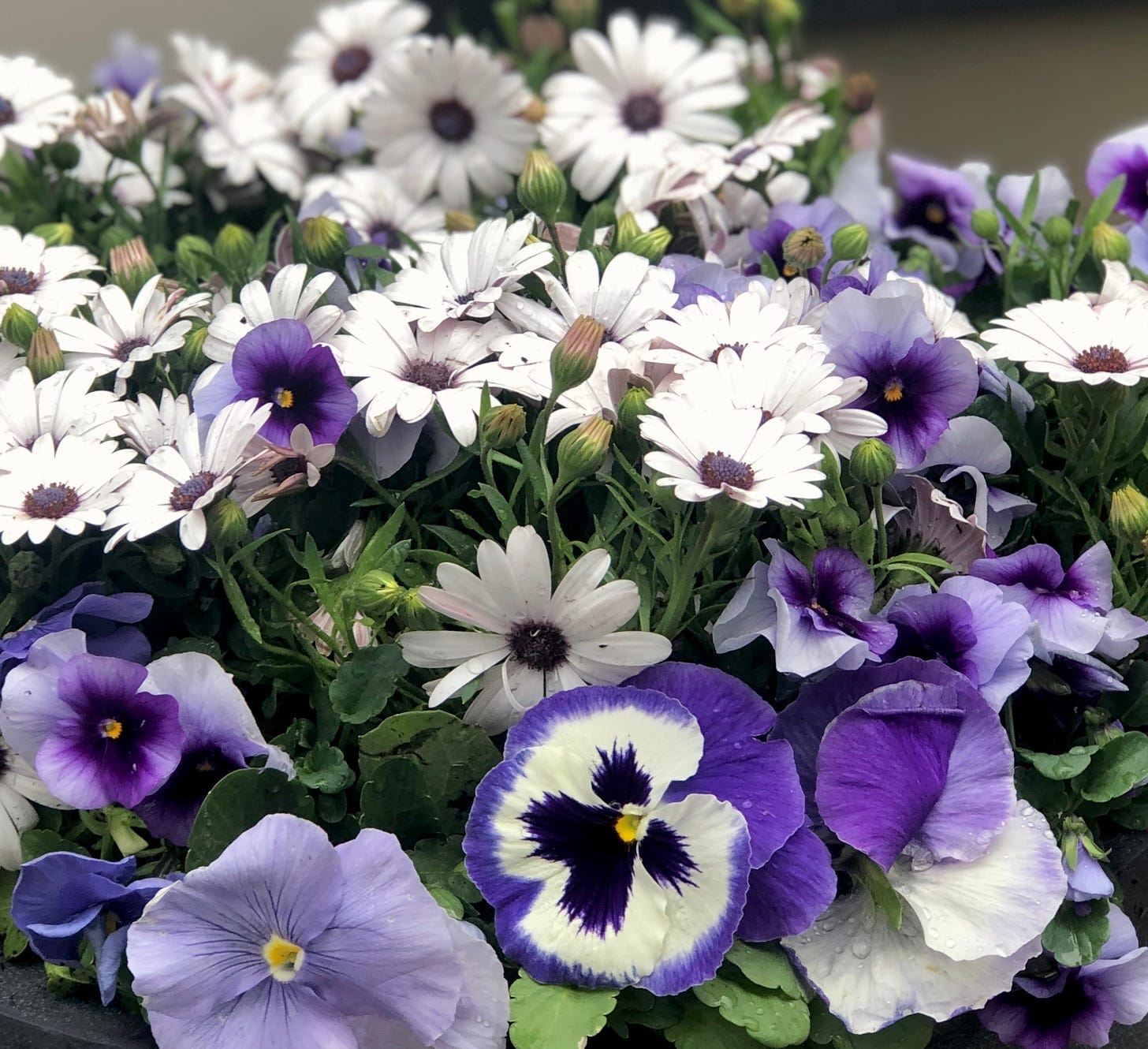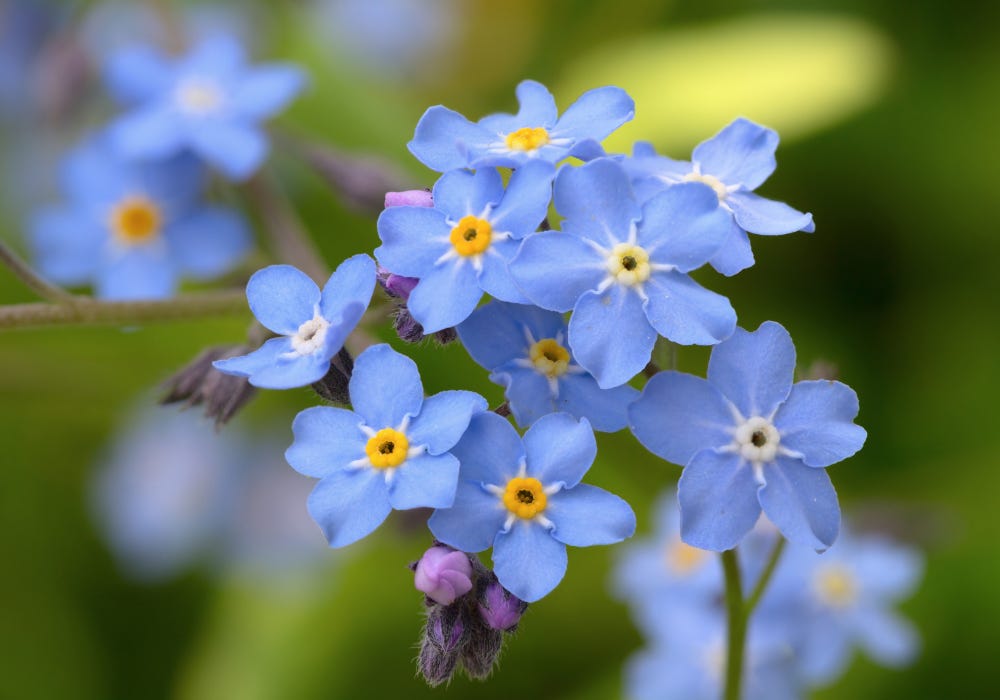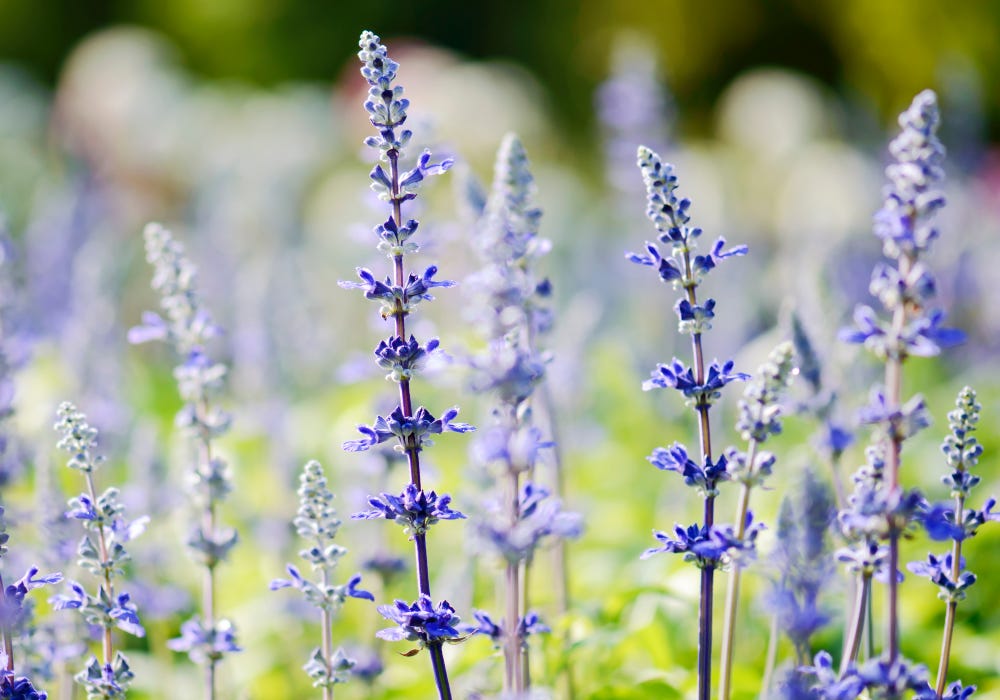"Blue color is everlastingly appointed by the deity to be a source of delight."— John Ruskin
Did you know that spring blooms happen in two waves?
Early spring begins the last week of March and extends to the first week of May. Late spring starts in May and finishes at the end of June (June 20th marking the first day of summer). When planning a garden, many people tend to focus on flowers that are iconically tied to late spring (hello daisies and coneflowers!) and last through summer. Highly underrated and often overlooked are the varieties that bloom in the first six weeks of the season. These early spring flowers are vital during those early days of March and April, providing pretty pops of color after a dull, grey winter.
Learn more about our ONLINE COURSE Designing Luxurious Gardens and Containers: The Inspired Garden Masterclass.
Today we will explore our garden team’s three favorite cool toned early spring perennials. One remarkable aspect of early spring bloomers is that there are many options in shades of blue and purple. As blue is the rarest of all flower colors, we suggest taking advantage of this rare opportunity to include it in your garden.
Woodland phlox (Phlox divaricata) is a low-growing ground spreader with baby blue, periwinkle, lavender, or white flowers. Requiring dappled sunlight or part sun/part shade, this wildflower will continue growing new blooms throughout the six week early spring period. Woodland phlox can also be planted in full sun but will likely need extra watering to keep it from drying out. Beautiful when placed on the edge of an elevated garden bed, it will eventually cascade down the sides. Woodland phlox can take over an area in a couple of seasons, so make sure you are managing its outward growth.
Forget-me-nots (Myosotis) bloom in calming shades of grey blue, baby blue, aquamarine, periwinkle, purple, as well as white, yellow, and pink. Like the woodland phlox, it’s a low grower and spreads easily. It can adapt to full sun, but prefers areas with dappled sun or part shade. An important thing to note about forget-me-nots is they require a good amount of moisture and will need to be watered more intensively than other flowers, especially in hotter areas.
A charming medieval legend illuminates how forget-me-nots were named, and became a symbol of eternal love and remembrance. The story goes that a French knight was walking along a river with his lady, bent down to pick a little blue flower for her, then fell into the river because of his heavy armour. Before sinking, he tossed the flower to her shouting “ne m’oubliez pas!” (“forget me not!”)
Our final pick, salvia (Salvia nemorosa), is a tall plant with soft oval leaves and spires of vibrant purple flowers. A pollinator staple, salvia thrives in full sun, making it the perfect choice for garden beds that tend to be drier. Our favorite varietal of salvia is called “caradonna” (above left). Caradonna salvia is one of the deepest purples you can get from a flower, making it a real show stopper in any garden. Salvia also comes in shades of blue, blue-violet, and lighter purple, and creates great contrast with pastel colored flowers. Salvia will begin blooming mid April and die off mid May, but if you trim back the flower stalks to the leaves at the base, you will get a second round of blooms that are slightly more spread out, but just as vibrant as the first round.
All three of these cool toned early spring perennials can be paired with annuals like stock (Matthiola incana) and vinca (Catharanthus roseus). Both stock and vinca come in cooler tones, like lavender and periwinkle. An interesting option is to pair some of your cool toned early spring perennials with warmer toned selections of stock and vinca to create a bold and beautiful visual contrast. In the next newsletter we will go over some warm toned early spring perennials that can be worked in to further accomplish this look.
These cool toned early spring perennials are often complimented by annuals like stock (Matthiola incana)(left) and vinca (Catharanthus roseus)(right). Both stock and vinca come in cooler tones, like lavender and periwinkles. An interesting choice is to pair some of your cool tone early spring perennials with warmer toned selections of stock and vinca to create a bold and beautiful visual contrast. In the next newsletter I will go over some warm toned early spring perennials that can be worked in to further accomplish this look.

Until next time!
Lucinda
If you would like to read more information on gardens and indoor plants check out our newsletter Get Inspired .





Leave a comment